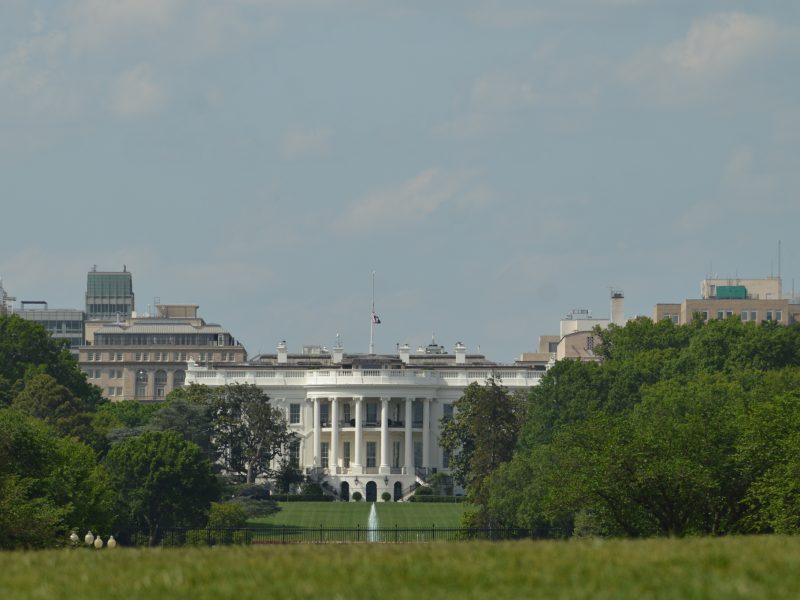Views expressed in opinion columns are the author’s own.
When the president’s response to the nation’s biggest aviation disaster since 2001 is to make baseless claims about diversity, equity and inclusion efforts instead of extending condolences, thanking first responders or promising a plan of recovery or action, the public is left disillusioned. Collective morale relies on the words of leadership, and a failure to provide that completely diminishes that morale.
Divisive rhetoric is more than just a blunt tone or harsh opinions; it leads to unfair blame, driving people apart when they should be supporting one another. In moments of national tragedy, Americans have traditionally relied on leaders who acknowledge their grief and provide direction. We saw this in former President George W. Bush’s speech after 9/11, and through former President Barack Obama’s response to the Sandy Hook tragedy. Both presidents expressed themselves in a way that brought people together in a unitary cause, without resorting to false claims and through approaching the events with more empathy.
The absence of these essential words from President Donald Trump left people feeling confused, and, more dangerously, fearful. Abrasive rhetoric injects an unnecessary layer of blame and suspicion into the conversations we have, turning discussions into arguments. In fact, research shows a correlation between racially charged language from high-profile people like Trump and incidents of prejudiced violence.
The language of leadership must prioritize care and action to prevent confusion and distrust, as well as accelerate recovery efforts. This applies not just on the highest federal level, but also at universities and institutions such as the University of Maryland.
Provocative speech is particularly dangerous during times of crises. Not only does it condone harm against specific people, but it cultivates climates of distrust, creating an air of taboo and defensiveness. This deters from our potential for collectivity, which is a key first step for coming together post-tragedy.
Leaders who offer tangible support and believable promises have a powerful effect on the collective community, providing a critical first step for recovery: acknowledgment. Words do matter, and the right words can be a catalyst for recovery.
This university’s leadership isn’t nearly as abrasive in their statements, nor are the implications of their actions anywhere as widespread as Trump’s. But they are perceived by many students as detached and passive in matters of student wellbeing. In this university’s most recent belonging and community survey, 18 percent of undergraduate students considered leaving the school, with more than half citing lack of a sense of belonging as the primary reason. An important facet of belonging is acknowledgement of student wellbeing by the institution itself.
After tragedies on campus, such as student deaths, leadership often ticks off boxes for reiterating mental health resources without taking into account necessary action to allow communities to grieve.
When students are grieving, they need more than just platitudes about mental health resources; they need to see a promise to a commitment in mitigating future harm, or acknowledgment of systemic factors at play. This can look like efforts such as leadership facilitating the creation of student forums to address root causes of mental stress and strain, and following through on authentic claims to take student concerns into account rather than solely delivering a rehearsed response.
Being overly dismissive of tragedies is just as harmful as being inciteful. Both leadership actions require more empathetic responses to ensure the people under their leadership feel like there is a plan of action in place.
Students in particular have the ability to be more critical of the messages we hear in times of crisis. One of the strongest tools available is to foster dialogue. Whether it’s through student organizations or informal gatherings, talking to others can help to better process the situation and see it from a practical lens. By speaking about leaderships’ plans, we can set up an environment for more action-oriented conversations focusing on the necessary promises and actions of leadership. What promises do we want from those responsible for our safety and educational well-being, and how can that happen?
Advocating for changes in the culture of the institutions we are a part of is also a useful tool. For example, promoting DEI initiatives in our communities in the face of Trump’s words can help build more supportive and inclusive environments.
DEI efforts aim to foster a sense of belonging. With this notion, student communities have more avenues for understanding and collaboration. This benefit goes hand in hand with proving the falsehood of negative DEI claims. With the creation of spaces where the primary goal is diverse inclusion, people with a range of perspectives can contribute to necessary critical conversations.
The language of leadership, whoever they may be, has a multitude of implications. It’s our responsibility to critically analyze what we are told and the impacts it has on the communities we are a part of. Acknowledging that may just be a first step in solving a problem, but it is a crucial one.
Fatima Masood is a junior government and politics major with an international relations concentration. She can be reached at fmasood1@terpmail.umd.edu.



